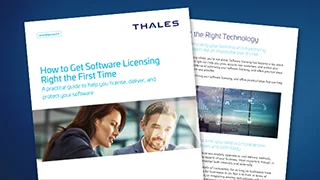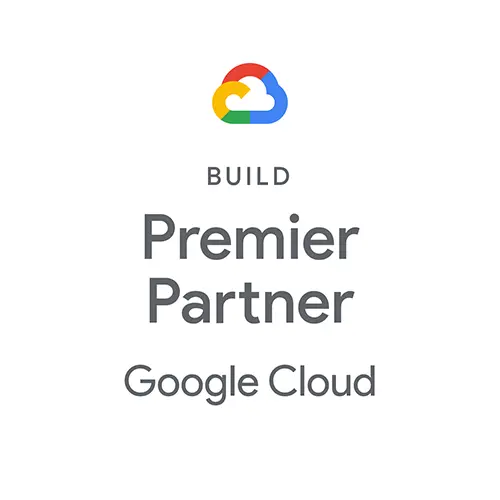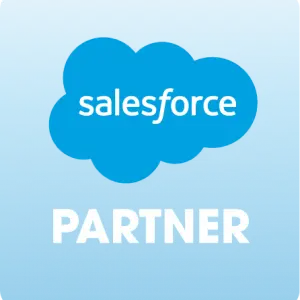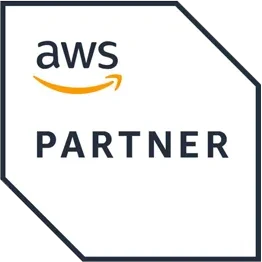What Is Software Piracy?
Software piracy refers to the unauthorized copying, distribution, or use of software. Individuals, small businesses and large enterprises can all be the targets of piracy, and it isn’t always intentional. Software piracy affects not only software vendors but also the end users who rely on legal, secure software, making it essential to understand what is software piracy and how to avoid it.
Understanding the types of software piracy and what software piracy prevention methods are available is crucial to protecting your product and your bottom line.
3 Common Types of Software Piracy
Many people think of software piracy as simply downloading illegal software from the internet, but it’s much broader. Software piracy examples generally fall into a few different categories. Each of these software piracy methods presents unique challenges to vendors and users:
1. Counterfeiting
This is one of the most blatant and harmful types of software piracy because it's intentional and can cause significant reputational damage. It can also impact revenue.
- Selling counterfeit software:
Pirates reproduce software to look like the original and sell it through unofficial online marketplaces or physical storefronts. In the past, street vendors would sell counterfeit copies of software alongside bootleg DVDs. Now, they're much more likely to sell online on dedicated websites or apps. The product may come with fake manuals, packaging, and license codes. - Pre-loaded on devices:
Also known as hard-disk loading, this is when computers, gaming consoles, or other devices are sold pre-loaded with pirated software. Buyers often believe they’re getting a fully licensed product. They buy devices and assume that the pre-loaded software is a nice perk.
2. Internet Piracy
This is one of the most widespread software piracy examples today. This type of software piracy is typically from users intentionally avoiding paying for legal software. There are typically two stages to this type of software piracy:
- Using keygens and cracks:
Hacker's reverse-engineer software to disable license checks or bypass user registration. Crack threats are often mitigated through regular software updates, but keygens generate new functional, and authentic keys. The software assumes that a new, legitimate license has been purchased. - Distribution Networks:
Users access pirated versions of software or even just the cracks via warez sites, Telegram, or file-sharing networks platforms like BitTorrent.
Sentinel Envelope - Comprehensive Software Protection
Our advanced security capabilities allow you to protect your product from reverse engineering, tampering, piracy, and counterfeit licensing.
3. User Non-Compliance
This is one of the more overlooked types of software piracy, which happens unintentionally when users violate license terms. This is especially common in business environments. Common software piracy examples in this category include:
- Installing software on more devices than the license permits – also known as client-server overuse. For example, a single department in a company purchases a certain number of licenses but continues using the software as the department grows or as employees move between departments.
- Using a personal license for commercial use – this uses the same number of licenses but violates the terms of service. It can easily happen when employees use personal computers for business or simply use their favorite tools at work as well as at home.
- Using expired licenses or trial versions – unless software actively shuts down after a trial period or when a subscription expires, many users won't notice that the expiration date has passed. Vendors who don’t license their trials effectively are at particular risk for revenue loss from this form of unintentional piracy.
The Real-world Impact of Software Piracy
The impact of all types of software piracy is far-reaching and affects both software vendors and users.
For Software Vendors
- Revenue loss: Software theft directly cuts sales.
- Reputational harm: Poor experiences with counterfeit or cracked versions reflect badly on the brand, even if the pirated version is to blame.
- Security risks: Stolen intellectual property (IP) can end up in the hands of competitors or bad actors.
- Increased costs: Vendors must invest more in support, legal resources, and security infrastructure to combat software piracy.
For End Users
- No updates or patches: Pirated software often can’t be updated, leaving users exposed to bugs and security vulnerabilities.
- Poor performance: Cracked versions frequently crash or are missing features.
- Security threats: Many pirated versions contain malware or spyware that can infect the user’s device.
- Legal exposure: Individuals and organizations can face legal action or fines for using unlicensed software, even unintentionally.
SaaS and Software Piracy
Software-as-a-Service (SaaS) is typically sold through a cloud-based subscription model, where only paying customers can log in to your website and access or download the software. This setup significantly reduces some risks of software piracy, since users don’t have a local copy that can easily be duplicated or redistributed. While that limits certain types of software piracy, it makes other forms of illegal access even more prevalent.
One of the most recognizable software piracy examples in the SaaS space is password sharing, which is a form of user non-compliance that we discussed above. If one account is reused too many times by different users, it undermines your business model. This type of software piracy can be particularly difficult to combat without compromising the user experience. One of the most famous examples is Netflix, with its attempts to crack down on password sharing across household.
What to Consider When Choosing Software Piracy Protection Solutions
Before investing in antipiracy software or developing any software piracy protection strategy, it’s important to consider your broader goals and constraints. An effective approach should align with your product type, business model, target markets, and user experience priorities. Keep the following factors in mind:
1. Cost vs. Value
Enterprise-grade protection can be expensive, but the cost of software piracy may be higher. Make sure to analyze the strength of the protection as well as its cost.
2. Timing of Implementation
The best time to implement protection is early in the development cycle—but many companies wait until the end when time to market is limited. Choose solutions that are fast and easy to integrate even in the later stages of release.
3. Risk Level by Region
Certain markets have higher software piracy risks. If you plan to release software in those regions, there is a greater need for strong IP protection and licensing enforcement methods.
4. Available Resources
Smaller teams may lack the bandwidth to support a full-blown security apparatus. Look for antipiracy tools that are well maintained and easy to learn.
5. User Experience
Software piracy deterrents need to be implemented carefully to avoid getting in the way of legitimate customers. For example, security may be getting in the way of usability if a system requires multiple codes and frequent password changes, locks users out or requires them to get in touch with support or has no tolerance for changes to computer or Wi-Fi settings. It's important to balance protection with ease of access.
How to Prevent Software Piracy: Proven Strategies
While software piracy can’t be completely eliminated, several methods significantly reduce the risk.
1. Wrap and Protect Your Code
- A code wrapper hides or scrambles code so that attackers can't find and disable the license check.
- This prevents bad actors from reverse engineering or tampering with your code.
- It also makes it much more difficult to bypass license restrictions, create keygens, or use other common software piracy techniques.
2. Use Licensing Technology
Licensing software controls access based on a set of predefined rules. Common license model examples include:
- Perpetual licenses with activation keys tied to hardware.
- Subscription licenses with renewal requirements.
- Usage-based licenses that charge by time or feature access.
3. Offer Fair Pricing and Packaging
- Fair prices discourage software piracy by making legal versions more accessible.
- Bundling features or offering tiered plans gives customers options and reduces the appeal of illegal piracy.
- Notify customers when they're reaching the end of a subscription term or trial period. Make it easy to subscribe or renew.
4. Secure Legal Protections
- Protect your intellectual property with patents, trademarks, and copyrights. These should be registered and marked. You can also use NDAs to protect trade secrets.
- Secure your code during and after deployment using encryption and obfuscation and by controlling access.
- Clearly define usage terms in clear, flexible license agreements, and enforce restrictions using digital license keys and embedded tamper-proof mechanisms.
How Thales Can Help: The Sentinel’s Suite of Software Protection and Monetization Solutions
Sentinel Software Licensing
Thales enforces license terms in a way that makes it so much harder for users to use more than they paid for—no matter where or how they’re using the software. Enforcing these rules is also the first step in preventing software from being copied.
- For on-premises deployments without continuous internet access, you can use fingerprinting, which locks the software license to specific hardware, or physical dongles that must be present in an available USB port.
- For on-premises deployments with cloud connectivity, you can take advantage of Thales’ cloud licensing system. The application can “phone home” periodically to verify that the license is still valid, the vendor can revoke it if necessary and even help detect abnormal patterns (like a license being used in a country where your software isn't sold).
- For SaaS products, user-based licensing makes it harder for users to share credentials by preventing simultaneous logins from individual users. Thales can help you set limits on concurrent sessions or flag suspicious usage patterns.
Sentinel Software Protection
Enforcing licensing is important—but it’s not enough on its own. Even the strictest licensing is meaningless if hackers can reverse engineer your code and remove or bypass the license checks. That’s why Thales also offers powerful software protection tools that stop people from tampering with your code.
Sentinel Envelope encrypts and obfuscates the code, making it extremely difficult for attackers to locate and remove the license enforcement mechanisms. Thales helps ensure the code is locked down, so attackers don’t get a shortcut to cracking your product.
The combined protection an licensing solution addresses both sides of the software piracy challenge: preventing unauthorized use and protecting your software from being tampered with or cracked.
In addition to protection and licensing, the Sentinel Platform also includes:
Sentinel Entitlement Management
A central hub that simplifies complex monetization operations that come from adopting diverse business models. Configure, deploy, manage, and track customizable product packages wherever your customers deploy. Integrate using out-of-the-box and low-code connectors.
Sentinel Usage Intelligence
Provides deep visibility into software usage and license behavior. It can help detect anomalies, reduce the risk of misuse or piracy, and inform future packaging or monetization strategies.
Whether you’re still trying to understand what software piracy is, or looking to implement advanced protection, Thales can help, with end-to-end solutions to secure your code, enforce your licenses, and keep your revenue intact. Contact our software piracy experts for your sophisticated software protection solution.





